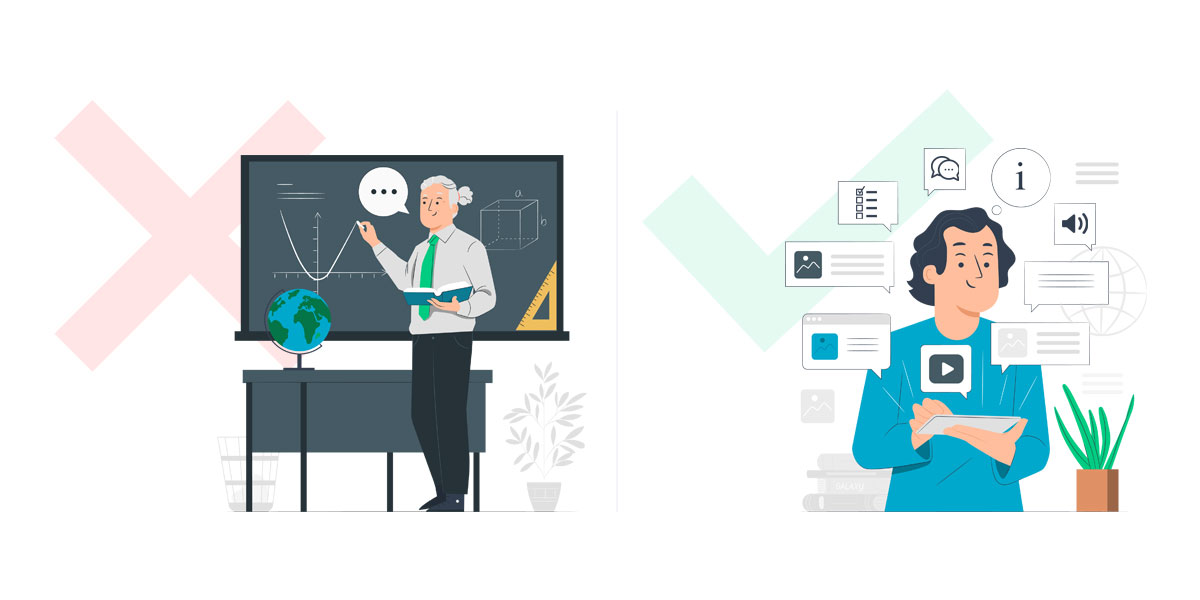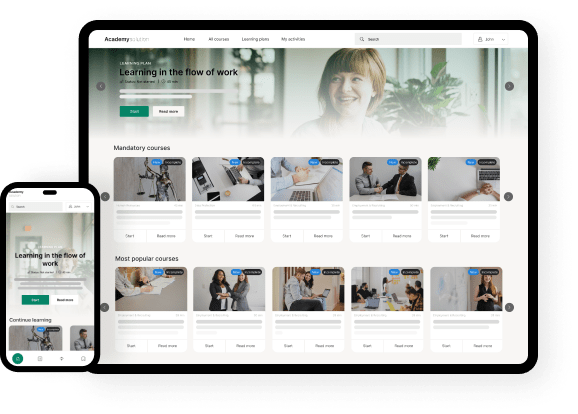When it comes to learning, there’s a big difference in how people best absorb the knowledge that’s presented to them. Precisely for this reason, online learning, or digital learning, or e-learning as it is also called, is superior to traditional physical learning.
In this blog post, we look at the most prominent advantages of digital learning and why you should choose digital learning over physical learning.
Digital learning is knoweledge where and when it suits you
Have you ever sat in a physical learning environment on a late Monday afternoon? If you have, you probably know how it gets harder and harder to absorb knowledge as time goes on. If you instead move your course online, you can wave tired course participants goodbye. Contrary to the physical learning environment, participants can better maintain concentration online and achieve the desired benefit.

One of the biggest advantages of digital learning is that new knowledge can be accessed when your course participants are ready. Another big advantage is that they can access learning where it best suits them. Do they, for example, learn best on their couch with a cup of coffee in hand? No problem. Are they most ready to absorb knowledge on a Wednesday evening after the children are put to bed? Check! All this and much more is possible with digital learning.
Digital learning is not lost
Do you or your company use physical learning for, for example, onboarding processes, upskilling, or knowledge sharing? If yes, there’s a good change your learning processes aren’t up-to-date anymore.
New knowledge constantly emerges and to stay current, responsible learning and development managers need to optimize their learning processes. But if you’re using physical learning, this is easier said than done. Additionally, you risk loosing all knowledge and learning paths if your learning and development employee leaves the company.
If you instead rely on digital learning courses for your internal and external knowledge sharing processes, you’re guaranteed easy replication of your learning – regardless of whether employees come or go. You also avoid having to spend unnecessary (and expensive) hours in a physical learning environment. And at the same time, you ensure consistent digital learning every time a new employee is onboarded or needs upskilling.
Include interactive digital learning
Now, you’re maybe thinking that digital learning is just about short videos. If that’s correct, we can assure you that digital learning is so much more. While physical learning typically includes traditional blackboard teaching combined with independent learning, the possibilities of digital learning are almost endless.

With digital learning, you choose the best way to convey your knowledge – be it through audio, video, writing, or a combination. In addition, interactive elements such as quiz questions, chat functions and the like can also be used to create an inspiring learning module that maintains users’ interest and optimizes learning.
Transport and geography aren’t obstacles
Are you currently in the process of developing a new physical course? If you are, you need to consider where it should take place so as many people as possible will benefit from it. It’s one of the necessities of physical learning.
No matter how exciting your course is, it can, however, be difficult to entice people to transport themselves great distances to participate. Your number of possible participants will therefore always be limited by the geographic location of the course.
If you instead create a digital learning course, your participants don’t have to worry about commuting or accommodation in order to participate. Suddenly every one become potential course participants, and it’s possible for you to receive many more registrations.
Optimize your learning process with valuable data
If you’ve ever created a course or learning path before, along the way you’ve probably realized what works and what doesn’t work.
But what if you could systemize these insights and use them to optimize the learning experience for your course participants? And what if this would make your participants want to come back time after time? That’s possible with digital learning.

One of the biggest advantages of digital learning vs. physical learning is the opportunity to quickly, easily, and automatically collect valuable data that you can use to optimize your course. With digital learning, you can, for example, get data on which of your courses are the most popular. But you can also collect data on time consumption, logins, and the user’s trial history.
All this data you can use to optimize your business and stay one step ahead of your competitors.
How do you get started with digital learning?
Are you ready to try digital learning?
We understand. When you use digital learning, you get all the benefits that we have mentioned above – and many more. And it’s easy to get started. We’ve even created a guide on how to get started with your own online academy.
Do you want to make your learning digital for the joy and benefit of your customers? Then book a free demo with us below.


